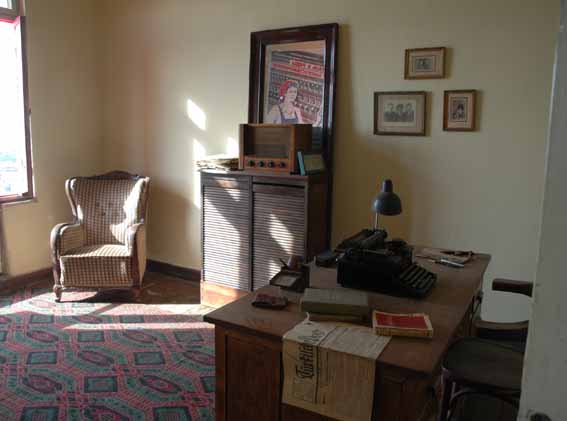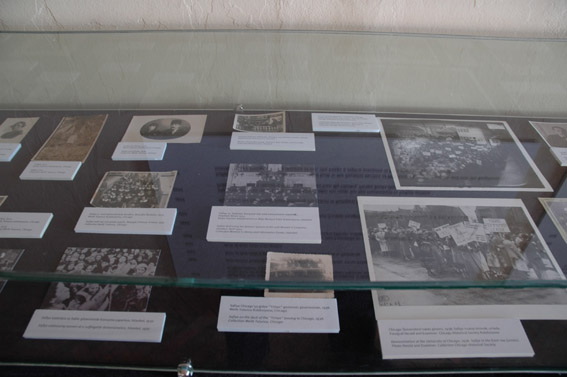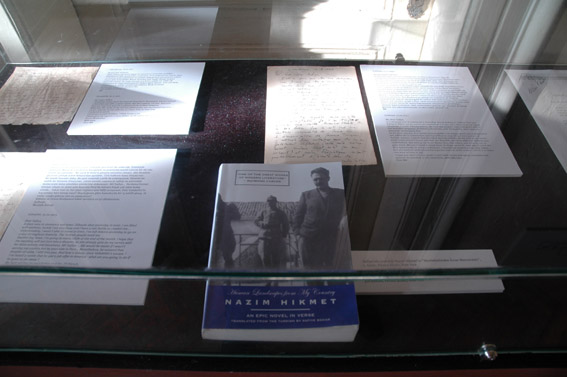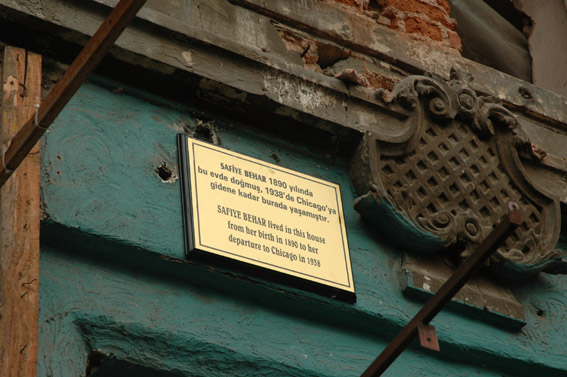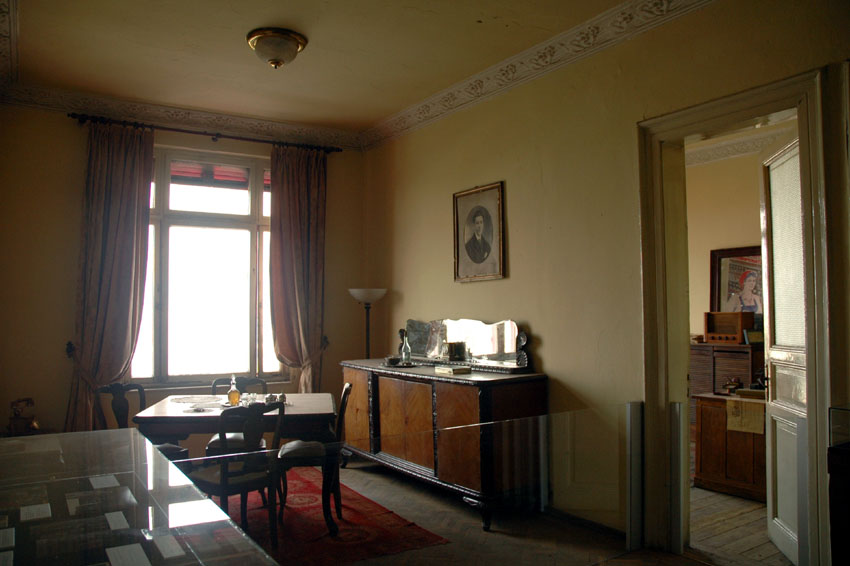
- A Tribute to Safiye Behar
Mixed-media installation, 2005
Safiye Behar was born in Pera, Istanbul, in 1890.
She was the single
daughter of a Jewish bar-keeper and grew up between the “Zeuve
Birahanesi” bar and the apartment above it. An intelligent and willing
child, she was eager to read, write and learn, and was encouraged by
her parents who hoped a better life than theirs for their daughter.
Probably influenced by the conversations she overheard in the “Zeuve
Birahanesi”, which were fairly politicized, she started to study Marx,
Proudhon and other socialist and anarchist writers with 17, reading and
re-reading with passion.
As a young adult, she married (Günay), had two sons (Aaron, Aziz)
and yet continued to emancipate herself and others. A self-taught
woman, she became a teacher in Istanbul and later, in Chicago, a
well-respected labor organizer and public speaker, supporter of the
Free-Thinking movement and advocate of women’s rights. Eventually, she
became the first English translator of Nazim Hikmet.
There have been other women who developped similar interests in the
last decades of the Sultanate and the first ones of the Republic, but
they were mostly from educated families. What makes Safiye’s position
unique is the double emancipation that she operated: from class and
from gender. In addition, she had a relationship with Mustapha Kemal
over a period of three decades. Even though her role has never been
aknowledged publicly, she was the inspiration of many of Mustapha
Kemal’s reforms in the 1920’s. Not only did she confront Kemal on a
certain number of central issues, but she managed to influence him
strongly.
What was the very nature of their relationship ? It’s difficult to say,
since they have left very few traces. If Melik Tutuncu still has a few
photographs of his grand-mother and most of the letters Kemal had sent
her, he could find neither a single picture of the two lovers nor any
mention connecting them to each other. Though, their correspondence
indicates an intense and intimate link - whether they discuss important
issues or are just writing love letters. It should also be mentioned
that Safiye and Kemal, from very early on, used almost exclusively
French as their correspondence language. It remains unclear if they did
so to bypass censorship, to keep secret from Kemal’s secretaries and
later Lâtife, or simply out of pleasure (they both enjoyed the
language very much). Nonetheless, it is likely that Kemal didn’t want
to be associated with Safiye, for both personal and political reasons.
After Kemal’s death, Safiye decided to join her husband Günay
permanently in Chicago, where he had been living since 1923, teaching
law at the University of Chicago. Astonishingly, Safiye adapted very
easily to American life. She found a common ground with many liberal
European immigrants and felt at ease with the Chicago leftist
tradition, not to mention the active Rogers Park cell of the Communist
Party. She also enjoyed discussions within the Free-Thinking movement,
mostly after her son Aziz had started dating Esther Goldman, the
grand-daughter of Emma Goldman, an outspoken feminist, atheist and
anarchist. Aged 48 when she definitely left Istanbul, Safiye showed an
impressive energy in her commitment to Chicago political struggles, as
well as to the Nazim Hikmet translations. She knew that Hikmet had a
potential readership in America and worked tirelessly towards bridging
the gap between Istanbul and Chicago.
Today, almost 70 years after Mustapha Kemal and 40 years after Safiye
have passed away, it’s time to pay a tribute. Luckily, Safiye’s
grand-son Melik Tutuncu, one of the main figures of the Chicago
architecture scene, was very helpful in providing valuable information
and documents, which made this tribute possible. A modest tribute,
indeed, since she would not have liked a too official rehabilitation,
yet a recognition of her courage and achievements, as well as a public
access to the place where she had been living for so long.
In 2005, as Turkey and the EU are playing liar’s poker about their
common future, Safiye might prove to be a helpful guiding model for
current and future generations. A product of both the East and the
West, she stood up for her ideals and devoted a lifetime to what she
believed in. She was a global thinker before the term was coined,
seeing the world beyond the narrow conceptions of borders, nations, and
states.
Michael Blum, 2005
The exhibition includes a reconstruction of Safiye's original
apartment, located Hamalbasi Caddesi No. 18, Beyoglu, Istanbul, a
comprehensive display of documents: photographs, letters, books, ... as well as a video-interview with Melik
Tutuncu.
The Grand Promenade, National Museum of
Contemporary Art, Athens, 2006 (curated by Anna Kafetsi)
9th Istanbul Biennial, Istanbul, 2005
(curated by Charles Esche and Vasif Kortun)
